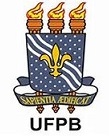BREAKING ALBINISM PATTERNS
DOI:
https://doi.org/10.46906/caos.n27.60173.p138-144Keywords:
albinism, diversity in albinism, PWA model, albinism in advertisingAbstract
Since the beginning of the 21st century, people with albinism (PWA) may be gaining more and more space in the world of fashion and advertising, as well as other minorities; all recognized under the term diversity. This fact can be perceived and received positively by the community of people with albinism, with regard to inclusion and strengthening the feeling of belonging to these spaces. But does the so-called “client”, that is, the one who hires the advertising or even the stylist, really understand and recognize the nature of albinism, or do they have in mind a pre-established stereotype of the person with albinism? This is impossible to affirm in its entirety. The visual essay presented here seeks to illustrate different ways of looking at albinism, with the objective of “breaking the patterns of albinism”, which perhaps may still inhabit the unconscious of fashion and advertising, especially with regard to stereotype.
Downloads
Metrics

Published
Issue
Section
License
Copyright (c) 2021 Andreza Cavalli

This work is licensed under a Creative Commons Attribution-NonCommercial 4.0 International License.
A Caos é regida por uma Licença da Creative Commons (CC): CC BY-NC 4.0, aplicada a revistas eletrônicas, com a qual os autores declaram concordar ao fazer a submissão. Os autores retêm os direitos autorais e os de publicação completos.
Segundo essa licença, os autores são os detentores dos direitos autorais (copyright) de seus textos, e concedem direitos de uso para outros, podendo qualquer usuário copiar e redistribuir o material em qualquer suporte ou formato, remixar, transformar e criar a partir do material, ou usá-lo de qualquer outro propósito lícito, observando os seguintes termos: (a) atribuição – o usuário deve atribuir o devido crédito, fornecer um link para a licença, e indicar se foram feitas alterações. Os usos podem ocorrer de qualquer forma razoável, mas não de uma forma que sugira haver o apoio ou aprovação do licenciante; (b) NãoComercial – o material não pode ser usado para fins comerciais; (c) sem restrições adicionais – os usuários não podem aplicar termos jurídicos ou medidas de caráter tecnológico que restrinjam legalmente outros de fazerem algo que a licença permita.
Recomendamos aos autores que, antes de submeterem os manuscritos, acessem os termos completos da licença (clique aqui).















